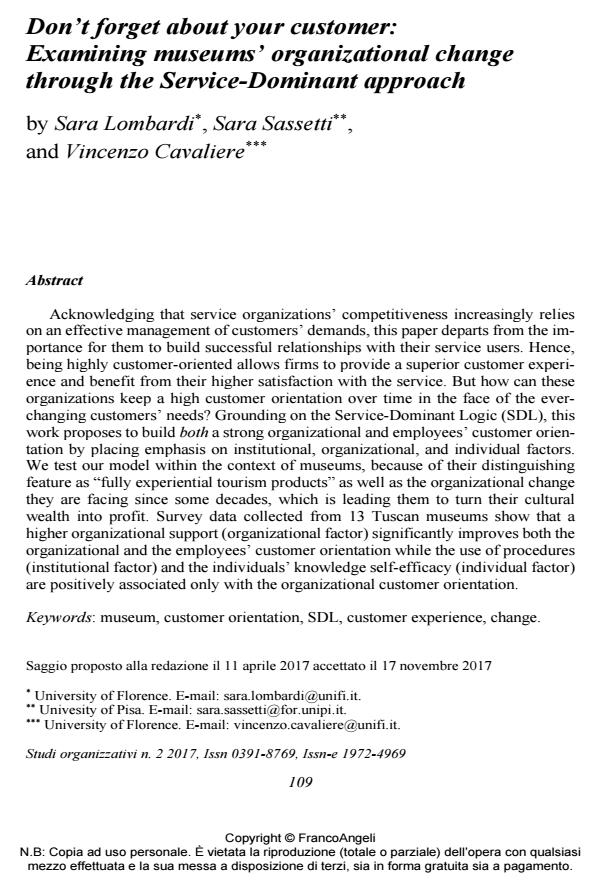Don’t forget about your customer: Examining museums’ organizational change through the Service-Dominant approach
Journal title STUDI ORGANIZZATIVI
Author/s Sara Lombardi, Sara Sassetti, Vincenzo Cavaliere
Publishing Year 2018 Issue 2017/2
Language English Pages 25 P. 109-133 File size 257 KB
DOI 10.3280/SO2017-002006
DOI is like a bar code for intellectual property: to have more infomation
click here
Below, you can see the article first page
If you want to buy this article in PDF format, you can do it, following the instructions to buy download credits

FrancoAngeli is member of Publishers International Linking Association, Inc (PILA), a not-for-profit association which run the CrossRef service enabling links to and from online scholarly content.
Acknowledging that service organizations’ competitiveness increasingly relies on an effective management of customers’ demands, this paper departs from the importance for them to build successful relationships with their service users. Hence, being highly customer-oriented allows firms to provide a superior customer experience and benefit from their higher satisfaction with the service. But how can these organizations keep a high customer orientation over time in the face of the ever-changing customers’ needs? Grounding on the Service-Dominant Logic (SDL), this work proposes to build both a strong organizational and employees’ customer orientation by placing emphasis on institutional, organizational, and individual factors. We test our model within the context of museums, because of their distinguishing feature as "fully experiential tourism products" as well as the organizational change they are facing since some decades, which is leading them to turn their cultural wealth into profit. Survey data collected from 13 Tuscan museums show that a higher organizational support (organizational factor) significantly improves both the organizational and the employees’ customer orientation while the use of procedures (institutional factor) and the individuals’ knowledge self-efficacy (individual factor) are positively associated only with the organizational customer orientation.
Keywords: Museum, customer orientation, SDL, customer experience, change
Sara Lombardi, Sara Sassetti, Vincenzo Cavaliere, Don’t forget about your customer: Examining museums’ organizational change through the Service-Dominant approach in "STUDI ORGANIZZATIVI " 2/2017, pp 109-133, DOI: 10.3280/SO2017-002006